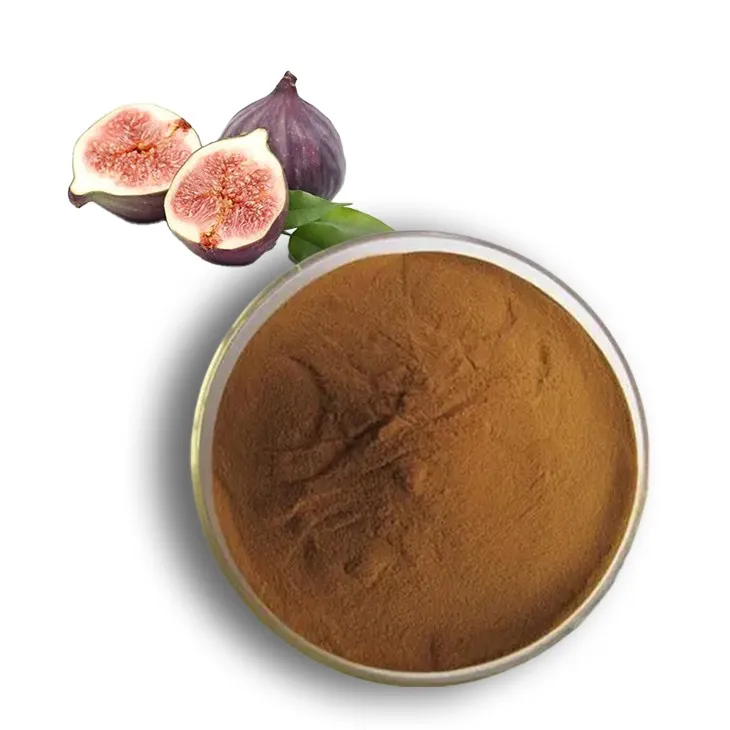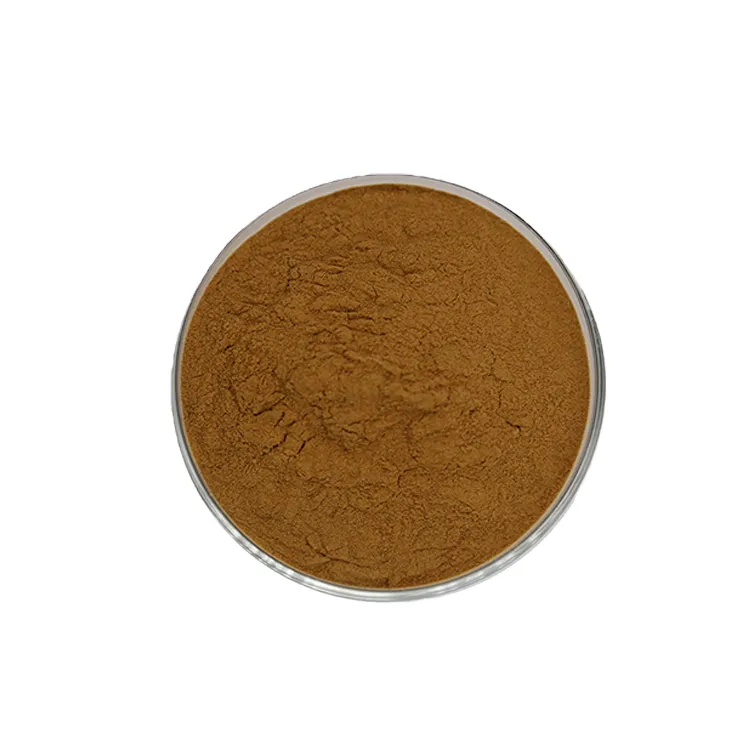- 0086-571-85302990
- sales@greenskybio.com
The best sources of natural fig extracts.
2024-11-28

Home - grown Figs in a Well - maintained Garden
Figs grown in one's own garden can be an excellent source of natural Fig Extracts. When figs are home - grown, the gardener has complete control over the growing conditions. This means that they can ensure the plants receive the optimal amount of sunlight, water, and nutrients.
Optimal harvesting time: One of the key advantages of home - grown figs is the ability to harvest them at the perfect time for extract production. Gardeners can closely monitor the figs as they ripen. They can wait until the figs have reached the peak of their maturity, which is when the concentration of beneficial compounds is likely to be at its highest. For example, the sugars and flavor - enhancing compounds are fully developed, resulting in a more intense and high - quality extract.
Purity and lack of contaminants: Home - grown figs are less likely to be exposed to pesticides and other chemicals compared to commercially grown figs in large - scale orchards. This makes them a purer source for extract production. Gardeners who practice organic gardening methods can further enhance the purity of the figs. They can use natural fertilizers like compost and natural pest control methods such as introducing beneficial insects.
Varietal selection: Gardeners can choose to grow specific fig varieties that are known for their excellent extract - making properties. There are many different fig varieties, each with its own unique flavor profile and chemical composition. Some varieties may be more suitable for making extracts with a particular aroma or for specific therapeutic uses. For example, the Black Mission fig is known for its rich, sweet flavor and may produce an extract that is highly desirable for use in culinary applications or in products aimed at promoting digestive health.

Figs from Traditional Orchards
Traditional orchards are another important source of natural Fig Extracts.
Heirloom Fig Varieties
Many traditional orchards grow heirloom fig varieties. These are fig cultivars that have been passed down through generations. Unique genetic traits: Heirloom figs often carry genetic traits that are not found in more modern, mass - produced fig varieties. These unique traits can result in extracts with distinct aromas and flavors. For example, some heirloom figs may have a more complex flavor profile that includes notes of spices, honey, or floral undertones.
Therapeutic values: In addition to their unique flavors, heirloom Fig Extracts may also have special therapeutic values. Some heirloom varieties may have a higher concentration of certain bioactive compounds. For instance, they may contain more antioxidants, which are beneficial for overall health. These antioxidants can help to fight against oxidative stress in the body, reducing the risk of chronic diseases such as heart disease and cancer.
Traditional Farming Practices
Traditional orchards often follow time - honored farming practices. These practices can contribute to the quality of the figs and, in turn, the extracts made from them. For example, traditional orchards may use natural pruning methods that promote healthy growth and better fruit development. Pruning helps to shape the fig tree, allowing sunlight to reach all parts of the tree evenly. This results in more evenly ripened figs with a consistent quality.
Another aspect of traditional farming is the use of natural soil amendments. Instead of relying solely on synthetic fertilizers, traditional orchards may use manure or other organic matter to enrich the soil. This enriches the soil with a wide range of nutrients, which are then absorbed by the fig trees. The figs grown in such nutrient - rich soil are likely to be of higher quality, producing extracts with a more robust flavor and greater nutritional value.

Figs Sourced from Sustainable Farming Practices
Figs obtained from sustainable farming operations are becoming increasingly important as sources of natural fig extracts.
Environmental Benefits
Soil conservation: Sustainable farming practices often focus on soil conservation. This includes methods such as cover cropping and reduced tillage. Cover crops are planted between fig tree rows to prevent soil erosion. They also add organic matter to the soil as they decompose, improving soil structure and fertility. Reduced tillage helps to maintain the integrity of the soil ecosystem, protecting the beneficial organisms that live in the soil such as earthworms and mycorrhizal fungi. These organisms play a crucial role in nutrient cycling and plant health.
Water conservation: Sustainable fig farming also emphasizes water conservation. Techniques such as drip irrigation are commonly used. Drip irrigation delivers water directly to the roots of the fig trees, minimizing water loss through evaporation. This not only saves water but also ensures that the figs receive a consistent supply of moisture, which is important for their growth and development. Water - stressed figs may have a lower quality, so proper water management is essential for producing high - quality extracts.
High - quality Extracts
Figs from sustainable farms are often of high quality. Organic certification: Many sustainable farms are organically certified. This means that the figs are grown without the use of synthetic pesticides, herbicides, and fertilizers. Organic figs are a healthier option for extract production as they are free from potentially harmful chemical residues.
Stress - free growth: Sustainable farming practices aim to create an environment where fig trees can grow without excessive stress. This includes providing proper spacing between trees to allow for good air circulation and sunlight penetration. Stress - free fig trees are more likely to produce high - quality fruits. The figs are likely to have a better flavor, texture, and nutritional content, all of which contribute to a superior extract.
Traceability: Sustainable farming operations often have better traceability systems in place. This means that it is easier to track the origin of the figs from the farm to the final extract product. Consumers are increasingly interested in knowing where their products come from and how they are produced. With good traceability, consumers can be confident that the fig extract they are using comes from a reliable and sustainable source.

Comparison of the Three Sources
Quality aspects:
- Home - grown figs in a well - maintained garden can offer a high level of purity and the ability to harvest at the exact right time, but they may be limited in quantity.
- Figs from traditional orchards bring unique flavors and potential therapeutic values due to heirloom varieties, but they may face challenges in terms of modern agricultural standards.
- Figs sourced from sustainable farming practices ensure environmental friendliness along with high - quality extracts, but they may be more expensive due to the cost of sustainable farming methods.
Availability:
- Home - grown figs are only available to those who have the space and resources to grow them in their gardens.
- Traditional orchards may be more region - specific, and the availability of heirloom varieties may be limited in some areas.
- Sustainable - sourced figs are becoming more widely available as the demand for sustainable products grows, but they may still be less accessible in some remote regions.
Cost:
- Home - grown figs have a relatively low cost in terms of the figs themselves, but the investment in gardening equipment and resources should be considered.
- Figs from traditional orchards may vary in cost depending on the rarity of the heirloom variety and the location of the orchard.
- Sustainable - sourced figs may be more costly due to the higher production costs associated with sustainable farming practices, but they also offer added value in terms of environmental and health benefits.
Conclusion
All three sources - home - grown figs in a well - maintained garden, figs from traditional orchards, and figs sourced from sustainable farming practices - have their own unique advantages when it comes to providing the best sources of natural fig extracts. The choice of source may depend on various factors such as personal preference, availability, cost, and the intended use of the extract. Whether it is for culinary purposes, in the production of natural health products, or for other applications, understanding these different sources can help in making an informed decision about the best source of natural fig extracts.
FAQ:
What are the advantages of home - grown figs as a source of fig extract?
Home - grown figs in a well - maintained garden can be a pure source. They are carefully nurtured, which means they are less likely to be exposed to contaminants. Also, they can be harvested precisely at the optimal time to ensure maximum extract quality.
Why are figs from traditional orchards considered good sources of fig extract?
Figs from traditional orchards are often good sources because they frequently have heirloom fig varieties. These heirloom varieties carry unique genetic traits. These traits result in extracts with special aromas and therapeutic values that may not be found in figs from other sources.
How do figs sourced from sustainable farming practices contribute to fig extract production?
Figs sourced from sustainable farming practices contribute to fig extract production in multiple ways. Firstly, they provide high - quality extracts. Secondly, sustainable farming practices ensure the long - term availability of figs for extract production. Moreover, it helps in environmental protection, which in turn can have a positive impact on the quality of the figs and the extracts made from them.
Are there any differences in the quality of fig extract between home - grown figs and those from traditional orchards?
Yes, there can be differences. Home - grown figs are nurtured in a small - scale, controlled environment, which may lead to a pure and high - quality extract. Figs from traditional orchards, on the other hand, may have unique genetic traits due to heirloom varieties, resulting in extracts with special aromas and therapeutic values. So, while both can produce high - quality extracts, the characteristics of the extracts may vary.
Can figs from sustainable farming be as good as home - grown figs for extract?
Yes, figs from sustainable farming can be as good as home - grown figs for extract. Sustainable farming figs ensure environmental protection while still providing high - quality extracts. Although the growing conditions may be different from home - grown figs, they can still offer excellent raw materials for fig extract production.
Related literature
- The Therapeutic Properties of Fig Extracts"
- "Fig Extract Production: Quality and Source"
- "Sustainable Sourcing of Figs for Extract Manufacturing"
- ▶ Hesperidin
- ▶ citrus bioflavonoids
- ▶ plant extract
- ▶ lycopene
- ▶ Diosmin
- ▶ Grape seed extract
- ▶ Sea buckthorn Juice Powder
- ▶ Beetroot powder
- ▶ Hops Extract
- ▶ Artichoke Extract
- ▶ Reishi mushroom extract
- ▶ Astaxanthin
- ▶ Green Tea Extract
- ▶ Curcumin Extract
- ▶ Horse Chestnut Extract
- ▶ Other Problems
- ▶ Boswellia Serrata Extract
- ▶ Resveratrol Extract
- ▶ Marigold Extract
- ▶ Grape Leaf Extract
- ▶ blog3
- ▶ blog4
-
Organic Vitamin B9 Powder Factory.
2024-11-28
-
Chinese Dandelion Root Extract Factories.
2024-11-28
-
Bulk purchase of okra extract.
2024-11-28
-
Chinese melatonin factories.
2024-11-28
-
Certified organic kidney bean extract.
2024-11-28
-
Kidney Bean Extract
2024-11-28
-
Red Wine Extract
2024-11-28
-
Curcuma Longa Extract
2024-11-28
-
Resveratrol extract
2024-11-28
-
Honeysuckle Pollen
2024-11-28
-
White mustard seed extract
2024-11-28
-
Coix Seed Extract
2024-11-28
-
Centella Asiatica Extract
2024-11-28
-
Lotus leaf extract
2024-11-28
-
Phyllanthus Emblica Extract
2024-11-28





















